Acoustic sensors enable efficient and non-invasive monitoring of a wide range of species, including many that are difficult to monitor in other ways. Although they were initially limited in application scope largely due to cost and hardware constraints, the development of low-cost, open-source models like the Audiomoth in recent years has increased access immensely and opened up new avenues of research. For example, some teams are using them to identify illicit human activities through the detection of associated sounds, like gunshots, vehicles, or chainsaws (e.g. OpenEars).
With this relatively novel dimension of wildlife monitoring rapidly advancing in both marine and terrestrial systems, it is crucial that we identify and share information about the utility and constraints of these sensors to inform efforts. A recent study identified advancements in hardware and machine learning applications, as well as early development of acoustic biodiversity indicators, as factors facilitating progress in the field. In terms of limitations, the authors highlight insufficient reference sound libraries, a lack of open-source audio processing tools, and a need for standardization of survey and analysis protocols. They also stress the importance of collaboration in moving forward, which is precisely what this group will aim to facilitate.
If you're new to acoustic monitoring and want to get up to speed on the basics, check out these beginner's resources and conversations from across the WILDLABS platform:
Three Resources for Beginners:
- Listening to Nature: The Emerging Field of Bioacoustics, Adam Welz
- Ecoacoustics and Biodiversity Monitoring, RSEC Journal
- Monitoring Ecosystems through Sound: The Present and Future of Passive Acoustics, Ella Browning and Rory Gibb
Three Forum Threads for Beginners:
- AudioMoth user guide | Tessa Rhinehart
- Audiomoth and Natterjack Monitoring (UK) | Stuart Newson
- Help with analysing bat recordings from Audiomoth | Carlos Abrahams
Three Tutorials for Beginners:
- "How do I perform automated recordings of bird assemblages?" | Carlos Abrahams, Tech Tutors
- "How do I scale up acoustic surveys with Audiomoths and automated processing?" | Tessa Rhinehart, Tech Tutors
- Acoustic Monitoring | David Watson, Ruby Lee, Andy Hill, and Dimitri Ponirakis, Virtual Meetups
Want to know more about acoustic monitoring and learn from experts in the WILDLABS community? Jump into the discussion in our Acoustic Monitoring group!
Header image: Carly Batist
- 0 Resources
- 2 Discussions
- 2 Groups
Recently accepted into the Rangeland, Wildlife and Fisheries graduate program at Texas A&M.
- 0 Resources
- 0 Discussions
- 1 Groups
- @Rob_Appleby
- | He/him
Wild Spy
Whilst I love everything about WILDLABS and the conservation tech community I am mostly here for the badges!!





- 1 Resources
- 260 Discussions
- 11 Groups
I'm a software developer. I have open source projects in practical object detection and alerting that is well suited for poacher detection and a Raspberry Pi based sound localizing ARU project



- 0 Resources
- 189 Discussions
- 5 Groups
- @maddy
- | Dr
Iam a Doctorate in molecular bology by profession & associated with a tech startup, focued on IoT/sensor based automation solutions. But I spend half of my time to document and conserve local & wildlife arond us and trying to explore our technology in conservation.Love to join
- 0 Resources
- 0 Discussions
- 2 Groups
- @claudlacroix
- | she/her
PhD fellow using deep learning to investigate marine fish acoustic signals and social behaviour.
- 0 Resources
- 0 Discussions
- 4 Groups
GreenLab

- 0 Resources
- 19 Discussions
- 8 Groups
- 0 Resources
- 0 Discussions
- 2 Groups
Over 35 years of experience in biodiversity conservation worldwide, largely focused on forests, rewilding and conservation technology. I run my own business assisting nonprofits and agencies in the conservation community


- 0 Resources
- 22 Discussions
- 11 Groups
- @fsanger
- | she / her/ ella
- 0 Resources
- 4 Discussions
- 7 Groups
- @jcturn3
- | He/Him
Colorado State University
I am a graduate student at Colorado State University working to develop novel acoustic technology for remotely monitoring wildlife.
- 0 Resources
- 6 Discussions
- 3 Groups
- @roxirisa
- | roxi
Biologist I consider myself a data scientist with a passion for nature and with an extensive experience in species distribution modeling, handling large data sets from different sources such as gbif, eBird, xeno-canto, Worldclim, Terraclimate, ocean color e NASA among others. But
- 0 Resources
- 0 Discussions
- 9 Groups
In a recent publication we tested Underwater Passive Acoustic Monitoring (UPAM) as a feasible non-invasive technique to study the calling behavior of therathened aquatic Andean frogs under natural conditions in the...
6 April 2024
What can soundscapes tell us about ecosystem functioning and health? We are looking to hire a postdoctoral researcher in ecoacoustics for Nature Recovery at Oxford
2 April 2024
Hussey Labs seeks a senior post-doctoral researcher/senior research associate for movement ecology of Greenland halibut in the context of fisheries management across Baffin Bay-Davis Strait, Eastern Canadian Arctic.
13 March 2024
Catch up on the conservation tech discussions and events that happened during World Wildlife Day 2024!
7 March 2024
Do you know anyone interested in this position? Let them know by sharing widely.
27 February 2024
The Ecological Acoustics and Behavior Lab at the University of New Hampshire seeks a PhD student to join our lab to investigate how forest habitat affects moose occupancy and soundscape in northern New Hampshire
13 February 2024
The primary focus of the research is to explore how red deer movements, space use, habitat selection and foraging behaviour change during the wolf recolonization process.
10 February 2024
Applications open for a PhD position in plant vibroacoustics at the University of Southampton
8 February 2024
We demonstrate the power of using passive acoustic monitoring & machine learning to survey species, using ruffed lemurs in southeastern Madagascar as an example.
23 January 2024
Come join our team! We're looking for a Program Officer to join the WILDLABS Community, hosted by WCS in Argentina. This role will support our research program, with the chosen candidate leading our horizon scanning...
22 January 2024
Careers
We're hiring ecologists for immediate start / remote working / short contract
19 January 2024
Two years in Cape Town, South Africa. Yearly visits to Rwanda. If you love to code, and all things Python/deep learning/tech stuff/ then you'll have an awesome time!
16 January 2024
April 2024
June 2024
July 2024
event
December 2023
event
| Description | Activity | Replies | Groups | Updated |
|---|---|---|---|---|
| 'Most importantly, we have to make it play a MIDI version of the DoctorWho theme song when you arm the device. That has to be the #1 feature if you ask me!' Seconded! |
+9
|
Acoustics, Biologging, Emerging Tech, Open Source Solutions, Sensors | 10 hours 24 minutes ago | |
| Hi Matthew,Thanks for your advice, this is really helpful!I'm planning to use it in a seagrass meadow survey for a series of ~20 drops/sites to around 30 m, recording for around... |
|
Acoustics, AI for Conservation, Data management and processing tools, Emerging Tech, Sustainable Fishing Challenges | 1 day 13 hours ago | |
| Super great to see that there will be more work on insect ecoacoustics! So prevalent in practically every soundscape, but so often over-looked. Can't wait to follow this project... |
|
Acoustics, AI for Conservation | 3 days 23 hours ago | |
| Awesome project!! |
|
Acoustics | 5 days 4 hours ago | |
| Thank you Carly! We have over 60 bats recorded in Zimbabwe |
|
Citizen Science, Acoustics, Conservation Tech Training and Education, Human-Wildlife Conflict | 1 week 1 day ago | |
| That is an interesting concept, and it would be great if something out there worked. In the meantime, I will try not to drive at dusk 🦘At one point, I knew the "sonic" animal... |
|
Acoustics, Citizen Science, Community Base, Human-Wildlife Conflict | 1 week 1 day ago | |
| This is so cool @Mauricio_Akmentins - congrats and look forward to seeing your project evolve! |
|
Acoustics, Biologging, Climate Change, Conservation Tech Training and Education, Data management and processing tools, Emerging Tech, Open Source Solutions, Protected Area Management Tools, Sensors, Software and Mobile Apps | 1 week 2 days ago | |
| Congrats @MattyD797 and team!!! We do a lot of work in the underwater bioacoustic realm and your tool certainly seems like it would be a great instrumental addition to the... |
|
Acoustics, Build Your Own Data Logger Community, Marine Conservation, Protected Area Management Tools, Sustainable Fishing Challenges | 1 week 2 days ago | |
| We've deployed passive acoustic monitors in various urban environments without any issues of theft, even in locations where camera traps and other technology has been historically... |
+5
|
Acoustics | 1 week 4 days ago | |
| We could always use more contributors in open source projects. In most open source companies Red Hat, Anaconda, Red Hat and Mozilla, people often ended up getting hired largely... |
|
Acoustics, AI for Conservation, Conservation Tech Training and Education, Early Career, Marine Conservation | 3 weeks 1 day ago | |
| Hello everyone, I'm interested in gathering insights on how the behavior of different species impacts the development and efficacy of... |
|
Biologging, Acoustics, Camera Traps, eDNA & Genomics, Emerging Tech, Marine Conservation | 3 weeks 4 days ago | |
| Thank you Carly, I will definitely take a look. |
|
Acoustics, Biologging, Climate Change, Conservation Tech Training and Education, Data management and processing tools, Remote Sensing & GIS, Software and Mobile Apps | 3 weeks 6 days ago |
PhD Opportunity: 'FLOATERS' position at Bioacoustic AI Doctoral Network
20 October 2023 12:36pm
Is there a good resource for learning bird calls?
20 October 2023 12:13pm
20 October 2023 12:21pm
A few more!
Yes i use the Merlin app however i dont recommend using it too much as the males get agitated a bit (around breeding nesting)
— Simon Cotter (@SimonCotter62) October 19, 2023
For sure—there’s a few apps that are ideal for this, including the Michael Morcombe and David Stewart’s e-guide ($30)
— David M Watson (@D0CT0R_Dave) October 19, 2023
Also Pizzey and Knight’s birds of Australia has a digital edition with calls that you can check and compare ($50)
— David M Watson (@D0CT0R_Dave) October 19, 2023
Failing all that, if you have internet connection where you are then Graeme Chapman’s website has a terrific library of bird calls - I often refer to it: https://t.co/Metmy9VUxU
— Harry Saddler (@MondayStory) October 19, 2023
Xeno Canto is also an incredible website for bird calls, but not very mobile friendly.
The online calls help but still a learning a challenge. So many different calls by the same bird, regional variations, age variations and more mimics than lyrebirds and magpies. Tips like the Australian Raven and Little Raven are distinguished by final notes are good
— Ian Thompson (@IanThom186000) October 19, 2023
Everyone has answered while I was on the bike, so I'm just repeating. I use Morcombe first, YouTube second and xeno canto if I'm really stuck
— Bird Michael From Twitt℮r (@wtb_Michael) October 19, 2023
Try Merlin App by Cornell University. Can take a recording and it gives you options to narrow the search
— Jason Mingo (@jason_mingo) October 19, 2023
I am keen to try this one myself:https://t.co/CQy0CuKC5I
— Matt Furlong @[email protected] (@matticus_flinch) October 20, 2023
https://t.co/QlY0lmGQSF is my go-to
— The Bird Emergency - Grant the Bird Nerd (@birdemergency) October 19, 2023
Arbimon - Jobs are not working
11 October 2023 8:31am
12 October 2023 11:23am
Pinging @carlybatist!
12 October 2023 4:22pm
Hi Jennifer,
Thanks so much for notifying us about this! We have a support page here and you can contact our user support team directly by clicking the green 'question mark' icon in the bottom right corner of the Arbimon page. We can absolutely look on the backend to see what is stalling your jobs, we'll just need a bit more information (e.g., project name, job type, playlist size, etc.) to do diagnostics. I can reach out to you directly for that info - what's a good email for you?

16 October 2023 8:10am
Hi, thanks so much for getting back. You can reach me at [email protected]
Peruvian Bird Audio Dataset Questions
29 September 2023 3:39am
3 October 2023 10:47pm
Hi Sean!
Wanted to just mention that Arbimon, Rainforest Connection's ecoacoustic platform, has a number of projects in Peru (here, here, & others, if you search by keyword 'peru'). We have some existing CNNs for that region (mostly from Ecuador & Brazil, but there is likely species overlap). Do feel free to DM me here or email me ([email protected]) and I'm happy to talk about collaborating!
-Carly
3 October 2023 10:50pm
Also tagging @NickGardner who works on a similar project! (detecting birds from audio in Peruvian flooded forests)
8 October 2023 4:49pm
Interesting!
Hi Sean, sounds like an excellent project. Definitely talk with the Arbimon folks! As @carlybatist said, I am working with birds in the Peruvian Amazon, but in Loreto. Definitely would like to hear more about your project. As for this labelling issue here, definitely looks like an error. I have not used this dataset, now I'm curious. To be honest, some questionable labelling in that file in general. Bounding boxes can be very subjective...
Song Meter Micro experience?
27 October 2022 6:33pm
11 May 2023 4:45pm
Hi Lucy,
Sorry! I was in the field by the time you replied, and have not been back long. I realise it's been months now, but are you still planning on using the SM Micros? If so, please have a look at my thoughts in the new comment on this thread. I would think in Norway, the stridulating insect issue would not be as bad as in the tropics. Depends on what you want to use them for. Battery life is still definitely an issue though, and even more so in low temperatures. Good luck, let me know how you get on, or if you went with a different recorder.
Cheers,
Nick
26 September 2023 5:55am
Hi everyone. I am suuuuuper late on this discussion but I just finished 6-month fieldwork deploying 18 SM Micro over 70 different locations in Java, so I thought I would like to share my opinion on this device. So my work is basically installing each recorder in one location for the duration of 7-14 days before moving it to a different location, with battery and silica gel changed in between every deployment. Here's my thought:
Waterproofing - The first 2 months of the fieldwork was the wettest season I have ever experienced in the field. Extreme rain almost on a daily basis. Most of the time the recorder was working just fine except for the 2nd week of deployment when I found the inside a bit wet, but it was probably because I forgot to ensure that both lids were clicking. The recorder still works fine after this deployment, and this was when I decided to change the silica gel before the next deployment.
Sound quality - As mentioned by others. there's an annoying peak at 6kHz. I did not originally plan to do soundscape analysis so it wasn't a big problem at the beginning, but now there is some discussion on doing so. Other than this I found the quality to be just adequate.
Battery Life - I am using alkaline 1,5 volt (non-rechargable) battery and get ~120 hours of recording, with a sample rate of 32khz. Suitable for my method, but certainly not for longer deployment.
Safety - My field site is full of a poacher who does not like to be detected, and the rangers warned me so many times about the camera trap that was destroyed or stolen by these people. I used steel cable and a small carabiner-style padlock which I later realized wouldn't stand a chance against a few hits of the machete, but luckily no recorder went missing--mostly because I tried to hide it as far as possible from the trails and cover our tracks. The small size of SM Micro makes it easy to hide among foliage (be careful on contact noise between leaves and recording), and the fact that it is colored green and has no external light also greatly helps (unlike Swiftone. Seriously, who thought that white is a perfect color for an expensive device that will be left in the forest for a long time?)
In conclusion, it is a cheap and easy-to-get device (compared to the mythical Audiomoth) for species presence detection in a short time like I did, but certainly not for longer deployment or more intricate bioacoustic analysis.
6 October 2023 9:08pm
Hi everyone,
I wanted to provide an update on behalf of Wildlife Acoustics regarding some of these comments in this thread. As some of you may know, we have just announced the second generation of our Song Meter Micro. Along with 33% longer battery life due to an expanded battery tray (which now holds 4 AAs instead of 3), the Song Meter Micro 2 will also have a flatter frequency response. Though we don’t have a firm release date at the moment, we are currently looking at an early 2024 release, with pre-orders likely to start at the end of 2023. Detailed frequency response charts and specs will also be posted to our site soon. In fact, we have built an anechoic chamber in our new office and will be doing detailed testing with a host of new precision instruments. For more info on the Micro 2, check out our current product page. Lastly, thanks all for your open and honest feedback. It allows us to make our products better and better for you.
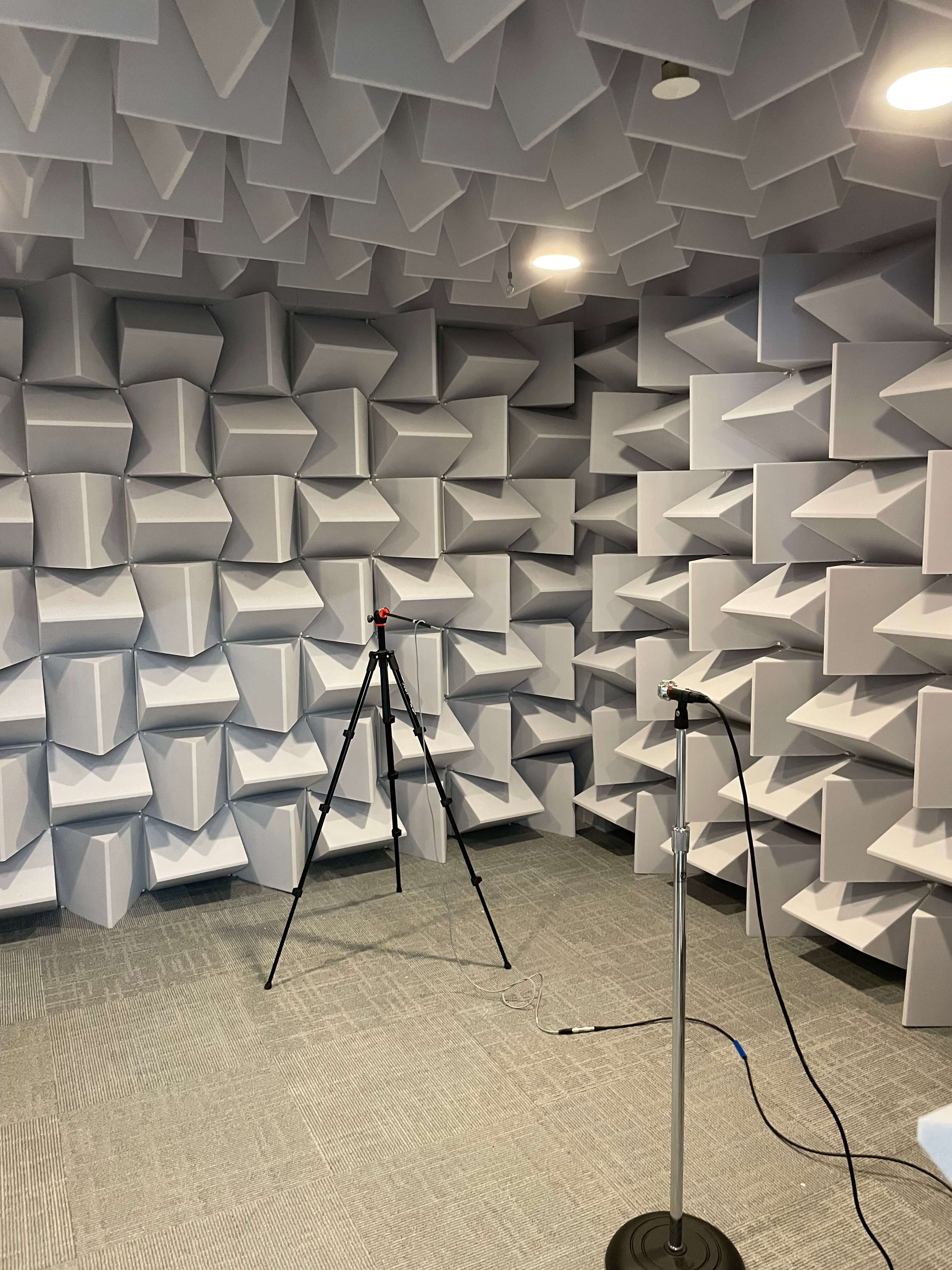
GEO BON Monitoring Biodiversity for Action
5 October 2023 3:10pm
Grad student, postdoc, and research assistant positions in bioacoustics and quantitative ecology at Kitzes Lab (University of Pittsburgh)
28 September 2023 2:00pm
Conservation Innovation Manager
27 September 2023 11:08pm
Soil Ecoacoustics - viable?
12 September 2023 1:29pm
19 September 2023 9:03am
Awesome, thanks a lot carlos! I've shared with the person who asked me.
if you're up for it, I also may steal you for a variety hour spot on this at some point, as now i'm curious to hear more!
19 September 2023 10:51am
Would be fantiastic to learn more on soil ecoacoustics in a variety hour!
22 September 2023 6:12pm
I second that!
Leaf Litter Tech Issue: WILDLABS Spotlight
22 September 2023 9:58am
*NEW* White Paper: Harnessing the Power of Sound & AI to track Global Biodiversity Framework (GBF) Targets
20 September 2023 12:53pm
Catch up with The Variety Hour: September 2023
20 September 2023 11:39am
WEBINAR: Phantom of the Orthoptera
14 September 2023 6:28pm
In case you missed it... (no. 1)
12 September 2023 11:49am
13 September 2023 6:23am
EcoHacK 2023
unsupervised machine learning to infer syntax and temporal organisations of animal vocalizations
7 September 2023 3:02pm
CIEEM 2023 Autumn Conference: Modernising Ecology: Techniques and Approaches
5 September 2023 1:59pm
Audiomoth online conference
5 September 2023 11:46am
24 October 2023 7:18pm
Large scale bioacoustic analysis in the Peruvian Amazon
1 September 2023 1:49pm
It's relatively easy to collect vast amounts of audio data - it's not so easy to analyse it and get consistent results. The Wilder Sensing platform enables users to upload vast quantities of audio which is then analysed using ML models such as BirdNET - read Auroras story.
Estimating California Spotted Owl population with bioacoustic survey
29 August 2023 1:55am
News about a population survey of California Spotted Owls using 1,600 autonomous recording units in the Sierra Nevada region. Machine learning made analyzing this acoustic data possible at this large scale for the first time.
Presentation opportunity for Audiomoth users - RSVP ASAP!
24 August 2023 11:44pm
Reviewing Now: Animal Telemetry Postdoctoral Fellowship
24 August 2023 11:09pm
Building a new recording device for sound localization
20 June 2023 11:57am
12 August 2023 10:26am
Thanks! Yes, I'm using the libraries from opensoundscape and it was Tessa who pointed me to wildlabs :) I'll publish the source code to the sound capture code this weekend in github with minimal instructions on configuring the rest of the OS till I get time to write an article about it which won't be till I've built 5x articles and done a convincing field test for a motivating article. Note, although I learnt how to configure the time synchronization with PPS from other articles on the net some steps were missed out that were vital to getting a fast and good sync, I'll be publishing these. Specifically, the start order of the gps versus chrony needs to be reversed from the default otherwise the PPS signal is not being communicated via shared memory to chrony which ruins the convergence to accurate time. Along with allowing the chrony time server daemon to step the clock so long as the alignment has > 1 ms of difference.
Simulations with opensoundscape suggest really, really good accuracy with the soundfinder algorithm is possible. When we get closer to new years eve I'll get really good test data from all the illegal fireworks that get set off here.
Once the capture side of things is sorted I'll move on to finding a good inference algorithm that performs well on the raspberry pi and then to working on a central server to correlate all of this automatically with the goal to making something that sends out an alert to a google maps link as to the location of the source, that will be fun :)
Oh and actually, I have to finish the install code for my other project that links computer vision algorithms to a state management and alerting system. This runs on jetson series SBCs. I've ported it all to the new Jetson Orin series computers but haven't yet finished writing the install code because I got distracted with this project about 4 months ago. The computer vision alerting state machine thing is here, and it's also useful in the fight against poachers. The new Orin series from nvidia allow the highest scoring open source computer vision algorithms (based on the microsoft coco dataset) to be integrated, such as yolov6, which results in significantly less false positives. And the state management facilities of my app provide you with a large amount of flexibility to reduce this even further.
13 August 2023 3:28pm
As promised, I've pushed the code to github today, the URL is:
Note, this is somewhat of a premature announcement (to keep my promise) because I still need to add a bunch of documentation and how to install the prerequisites, recommended way of deploying etc.
However, for the curious, it is a very simple program. And so long as you install jackd2 and the prerequisites to the build script (./build.sh) it will run on whatever system you have and accurately align the sound files to the system time, along with the tracking file.
Much of the work surrounding this project was working out how to setup the GPS synced system time correctly. There are several guides on how to do this, however, when I tried to run this on a system that was disconnected from the network I found that there were important steps omitted in the guides that were needed to provide fast and accurate syncing in the absence of any network. I'll be adding these steps to this repository over time and write up a nice article about it once I've done the field tests. With the changes I made when installing the time sync changes the current system will sync to sub microsecond accuracy within a minute from when 5 satellites are locked.
24 August 2023 12:52pm
I've tested a Petterson ultrasonic microphone with a sample rate of 384khz and it works out of the box with this software as well. Would be cool to sound localize some bats.
RFCx/Arbimon is hiring a Quantitative Ecologist!
11 August 2023 11:50pm
Hydromoth settings
9 May 2022 5:03pm
17 July 2023 3:05am
Hi Ian, are you in Brisbane? We're based in Brisbane also. You can borrow a few BARLT and Aquarian Audio hydrophones for a little while to compare against your hydromoth. We have localisation also using the inbuilt GPS and software to time align the calls. It'll probably save you time. You can run a microphone and hydrophone on a cable on the one recorder.
1 August 2023 5:21pm
Hi Ian,
the otter detection works great but we recorded the otter calls with the Hydromoth outside of the water. Do you plan on recording Platypus underwater?
11 August 2023 8:10pm
Hi Ian,
I have hours of an unidentified creature recorded during overnight recording sessions with mutliple hydrophones. We think it is platypus but there is nothing to compare against that isn't from captive sounds. I am waiting on the Hydromoth to become available again so I can do longer term monitoring.
Acoustic Monitoring and AI to Recognize Elephant Sounds & Gunshots
9 August 2023 11:11pm
This article discusses Cornell's bioacoustics work with AI tools to recognize both elephant "voices" as well as gunshots. The elephant rumbles analyzed in this work are almost imperceptible to the human ear, but can be clearly detected with technology.
#Tech4Wildlife Photo Challenge: Judges' Panel Honorees
4 August 2023 10:00am
European Forum Alpbach
1 August 2023 5:23pm
Senior Technical Specialist, Monitoring & Technology, ZSL
18 July 2023 1:44pm
New Updates to Carbon Mapper Data Portal
12 July 2023 4:57pm









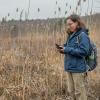









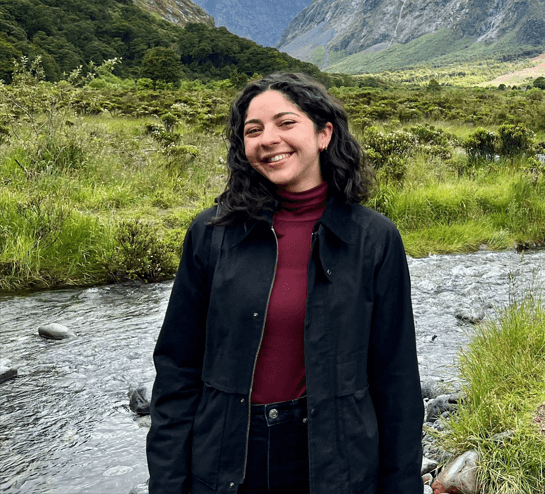















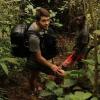



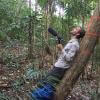









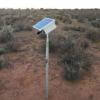

20 October 2023 12:19pm
Some of the recommendations Kylie has been getting: